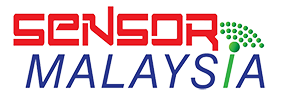Submissions
Submission Preparation Checklist
All submissions must meet the following requirements.
- This submission meets the requirements outlined in the Author Guidelines.
- This submission has not been previously published, nor is it before another journal for consideration.
- All references have been checked for accuracy and completeness.
- All tables and figures have been numbered and labeled.
- Permission has been obtained to publish all photos, datasets and other material provided with this submission.
Articles
Section default policyFabrication & Manufacturing
Thin films, printing/inkjet/aerosol jet, additive manufacturing, roll‑to‑roll, wafer‑level processes, packaging, reliability and qualification.
Signal Processing & Intelligence
Physics‑informed ML, tinyML, on‑sensor learning, multimodal fusion, calibration, drift compensation, uncertainty quantification, digital twins.
Applications
Healthcare/biomedical diagnostics, environmental and agricultural monitoring, industrial IoT and predictive maintenance, structural health monitoring, robotics and HRI, smart cities, energy systems, transportation and autonomous systems.
Copyright Notice
JSSM is open access under CC BY 4.0 (author‑retained copyright). Alternative CC licenses may be accommodated to meet funder mandates upon request.
If reproducing third‑party material (figures, tables, images, extended text) not covered by your rights or public domain/fair use, you must obtain written permission from the copyright holder before submission and include the required credit line.
Permission is required for: substantial extracts; previously published tables/figures (unaltered or slightly modified); photographs and artworks where you do not hold copyright.
Permission is not required for: short quotations (fair use), fully redrawn/novel figures, or reconstructed tables from public data—with source citation (e.g., “Data adapted from…”).
Privacy Statement
The names and email addresses entered in this journal site will be used exclusively for the stated purposes of this journal and will not be made available for any other purpose or to any other party.


